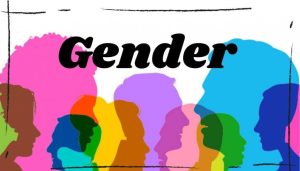How the language we speak shapes the way we think
1402-05-14 1402-08-02 0:49How the language we speak shapes the way we think
(ویژه سومین کنفرانس چند زبانههای ایران )
Do people who speak different languages think differently? Does the language we speak affect the way we see and perceive the world around us? Do people who speak different languages
think differently simply because they speak different languages? The idea that language might
shape thoughts has been seen as irrational, illogical, and untestable at best, however, in
recent years research on linguistics has provided us with evidence regarding the effects of language on thoughts.
Languages

One of the most magical and creative abilities of humans is language. Language is our primary
tool for externalizing the many complex feelings we have as human beings and to convey
thoughts, emotions, and concepts. But languages are not simply for expressing our thoughts
instead the very thoughts we wish to express are fundamentally shaped by the structure of the
language we speak. This concept is called language relativity. The pioneering linguist Benjamin
Whorf grasped the relationship between human language and human thinking. His basic thesis
is that our perception of the world and our ways of thinking about it are deeply influenced by
the structure of the languages we speak.
In other words, language is about how we break up reality into identifiable categories and label
them. Languages give us ready labels! And this ready label that you are using in your mother
tongue might not exist in another language so you can’t convey the meaning while speaking
that language and it makes the native speaker of that language think differently about that
since people are only capable of constructing thoughts for which the possess actual words.
Although most people think the opposite is true –our thoughts shape the language we
speak. This fallacy can easily befall a monolingual person as he has no context- no comparison-
against which he compares his native language which he has heard and spoken his entire life.
Colors

An easier way to explain this is with color perception. Color is quite a complex property of the
visual world. Our brain decodes colors in a complicated way and our language enables us to
have terms to denote different colors. People perceive colors through the lens of their mother
tongue.
The number of terms we have for the colors we see varies from one language to another. There
are radical variations in the way languages carve up the spectrum of visible light; for example,
green and blue are distinct colors in English but are considered shades of the same color in
many languages. It turns out that the colors that our language routinely obliges us to treat
as distinct can refine our purely visual sensitivity to certain color differences in reality so that our brains are trained to exaggerate the distance between shades of color if these have different names in our language. For instance, English speakers name different shades of blue as dark blue and light blue. Russian speakers have two distinct categories for blue: it’s either siniy (dark blue) or goluboy (light blue). We do the same thing for another color: dark red and
light red — the latter of which we call pink! To test whether differences in color language lead to differences in color perception, we compared Russian and English speakers’ ability to discriminate shades of blue. In Russian, there
is no single word that covers all the colors that English speakers call “blue.” Russian makes an
obligatory distinction between light blue (goluboy) and dark blue (siniy). Does this distinction
mean that siniy blues look more different from goluboy blues to Russian speakers? Indeed, the
data say yes. Russian speakers are quicker to distinguish two shades of blue that are called by
the different names in Russian.
Time

People’s ideas of time differ across languages in other ways. For example, English speakers tend
to talk about time using horizontal spatial metaphors (e.g., “The best is ahead of us,” “The
worst is behind us”), whereas Mandarin speakers have a vertical metaphor for time (e.g., the
next month is the “down month” and the last month is the “up month”). Mandarin speakers
talk about time vertically more often than English speakers do, so do Mandarin speakers think
about time vertically more often than English speakers do? Imagine this simple experiment. I
stand next to you, point to a spot in space directly in front of you, and tell you, “This spot, here,
is today. Where would you put yesterday? And where would you put tomorrow?” When English
speakers are asked to do this, they nearly always point horizontally. But Mandarin speakers
often point vertically, about seven or eight times more often than English speakers.4
One of my friends had a similar experience. He is Persian and he used to live in Iran for many
years. He learned to drive on the right side of the road while he was living in Iran. When he
moved to South Africa two years ago, he had to learn to drive on the left side of the road. He
was a taxi driver and he spoke English to the local passengers. It all went well until one day, he
was on a trip with his friends. His friends were also Iranian but they were speaking English in
the car. Suddenly one of his friends switched to Persian, and he subconsciously moved to the
! right side of the road scaring everyone in the car and on the road
Space

On the western edge of Cape York, in northern Australia, live the Kuuk Thaayore, a small
.An Aboriginal community whose language has a very peculiar trait
Instead of using the words right, left, and back, to define space as we do in English, they use
cardinal points such as north, south, east, and west. This means that in the Kuuk Thaayorre
language you get to say things like “Sir, please move to the north northwest a little,” or “Don’t
panic but, you have a spider in your southeast leg”.
It’s like the Kuuk Thaayorre were born with an internal compass. At any time of day and night,
they know exactly where they are
according to researcher and Stanford University professor of psychology Lera Boroditsky, who
studied the Aboriginal community’s language, “Speakers of languages like Kuuk Thaayorre are
much better than English speakers at staying oriented and keeping track of where they are,
even in unfamiliar landscapes or inside unfamiliar buildings.”
it’s not as if English speakers can’t learn the cardinal directions, but they don’t have an internal
compass like the Kuuk Thaayorre do. The reason this happens is because the Kuuk Thaayorre’s
language habitually obliges them to think about cardinal points and this shapes how they see
.the world
Culture

The language we speak also determines the things that we care about and are important to us.
Some elements within a culture are more prominent in that culture in comparison with other
cultures. A very well-known example of this is snow in the Eskimo culture. The Eskimo people
are inhabitants of the Arctic. Whereas in the English language, there is only one word for snow
the Eskimo language has many words for snow. This proves that this language for snow allows
the Eskimo people to “see” snow differently than speakers of other languages who do not have
as many words for snow. That is, Eskimo people see subtle differences in snow that other
people do not. This clearly shows that language and culture are embedded in each other.
Gender and words

Gender can play a significant role across many languages in cultures. In languages such as
German, Italian, and Spanish nouns are gendered. This means that there are masculine and
feminine words, rather than neutral terms. For instance, in the Italian language, the word beer
is “Birra” which is a feminine noun. The Italian word for wine is “vino”, which is a masculine
.noun
Research indicates that the way that native speakers describe these objects depends on the
gender of the noun. For example, “vino” may be described as strong and full-bodied, which are
more masculine words. “Birra” may be described as “light” and “bubbly”, which are more
.feminine characteristics
In many languages like Arabic, Farsi, Turkish, and Mandarin if you are talking about your uncle
you have to clarify whether he is maternal or paternal and whether your uncle is related to you
by blood or by marriage.
Another example is Turkish. In Turkish, you have to include in the verb how you obtained the
information that you were talking about. You would use a slightly different
verb structure if you have seen it with your own eyes or you have just heard about it. , so these
examples show that the speakers of different languages comprehend their experience
differently just because they speak different languages.
While it is true that texts in one language can be translated to any other language, there are many
examples of words in certain languages that do not have a literal translation to another. The keyword
here is literal – while you can still get the idea across, the true essence and feel of the word can only be
: fully grasped if understood in the base language. Let’s look at some examples
French, dépaysement
The feeling of not being at home, in a foreign or different place, whether a good
.or a bad feeling; change of scenery, disorientation
Portuguese, Saudade
A deep emotional state of nostalgic or profound melancholic longing for an
absent something or someone that one cares for and/or loves, while
simultaneously having positive emotions toward the future. Moreover, it often
carries a repressed knowledge that the object of longing might never be had
again. Translated to English as missing, longing, or nostalgia, but clearly, it is
.deeper
Japanese, mono no aware
The awareness of impermanence, or transience of things, and both a transient
gentle sadness (or wistfulness) at their passing. Literally the pathos of things, and
also translated as an empathy toward things or a sensitivity to ephemera.
Spanish , Vergüenza Ajena
. To feel embarrassed for someone (even if they don’t feel embarrassed themselves);
“secondhand embarrassment.”
These words can be translated more or less into English and other languages, but their essence
cannot be captured in one word. We may be able to use elaborate descriptions or various
examples to attempt to convey the point, but the intrinsic beauty of the word in its base
language is lost in this extensive attempt to translate it
One must understand the term in its base language to fully grasp it. This is why becoming fluent
in a second language requires that you do not translate between it and your native language.
when communicating – you must be thinking and understanding in your second language.
Conclusions

The patterns that the language we speak is made of immensely shape how we construct our
perception of reality, build our opinion, and interpret of incredibly complex knowledge system
that we have. Given the things that have been tackled, it’s no surprise that those who speak
more than one language see the world differently. Numerous studies have shown that a new
language can change how the human mind pulls information together, hence, enabling
bilinguals (and even multilinguals) to have more than one perspective on a particular issue. Say,
for decision-makers, this may facilitate negotiations and the ability to see both sides of an
argument and different points of view. After all, we know that multilingualism is not a matter of
replacing words. Indeed to speak a second language is to have a second soul. Our language
determines how we see the world around us and the world inside us. So do yourself a favor and
start learning another language. The limit of your language is the limit of your world!

